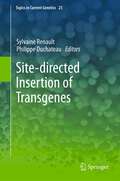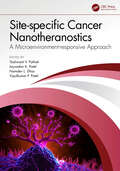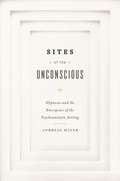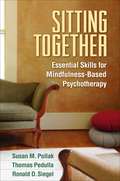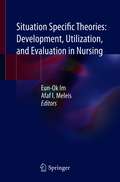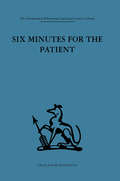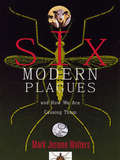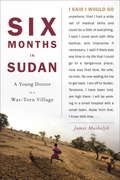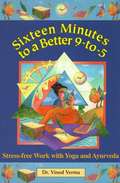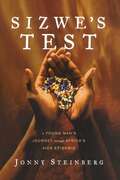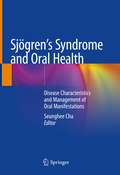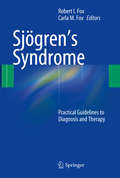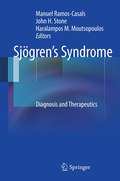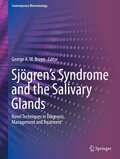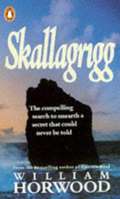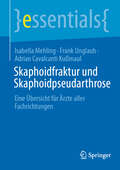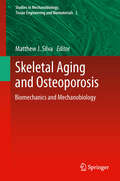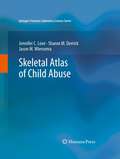- Table View
- List View
Site-directed insertion of transgenes
by Philippe Duchateau Sylvaine RenaultThe post-genomic era has brought new challenges and opportunities in all fields of the biology. In this context, several genome engineering technologies have emerged that will help deciphering genes function by as well as improve gene therapy strategies. Genomic modifications such as knock-in, knock-out, knock-down, sequence replacement or modification can today be routinely performed. However, in front of this large palette of methodologies scientists may experience difficulties to gather useful information's scattered within the literature. This book aims to present the state of this field from basic mechanisms of site-directed modifications to their applications in a wide range of organisms such as bacteria, yeast, plants, insects, mammals. It will discuss the problems encountered when using the random integration strategy and present the recent advances made in targeted genome modification. Technologies based on Zinc Finger nucleases, Meganucleases, TALEN, CRE and FLP recombinase, C31 integrase, transposases and resolvases are fully detailed with their strengths and weaknesses. All these information's will help students and experienced researchers to understand and choose the best technology for their own purposes.
Site-specific Cancer Nanotheranostics: A Microenvironment-responsive Approach
by Jayvadan K. Patel Yashwant V. Pathak Namdev L. Dhas Vipul P. PatelThis book addresses various aspects of recent progress in the development of all types of tumorresponsive and site-specific delivery platforms together with the range of related chemistries. It is a timely volume as global research in oncology is moving towards more biochemical signal–based and cell environment–inspired therapeutic strategies. Furthermore, the book emphasizes the need to explore various characterization techniques for specific stimuli-responsive nanoplatforms and toxicological and regulatory aspects. Features • Focused, comprehensive volume providing a different angle on theranostics in cancer intervention. • Targets not only the multifunctionality of nanosystems but provides a comprehensive overview of niche technical aspects. • Given the chemistries presented here, it provides both early-career and experienced readers with strategies from leading authorities in the field globally.
Sites of Drug Action in the Human Brain
by Anat Biegon; Nora D. VolkowSites of Drug Action in the Human Brain uses the results of recent analyses of the regional brain distribution and binding pattern of drugs in the human brain. This new book specifically addresses drugs of abuse and treats the effects of various drugs on behavior and mood, as well as on metabolism and blood flow in the human brain. It also presents the methodological aspects of investigating the sites of drug action in the human brain. Because it focuses on the living human brain, this book differs from other books on the subject, which primarily use the results of postmortem studies. Sites of Drug Action in the Human Brain therefore provides valuable information on the clinical aspects of drug intoxification, addiction, and toxicity.
Sites of the Unconscious: Hypnosis and the Emergence of the Psychoanalytic Setting
by Andreas MayerIn the late nineteenth century, scientists, psychiatrists, and medical practitioners began employing a new experimental technique for the study of neuroses: hypnotism. Though the efforts of the famous French neurologist Jean-Martin Charcot to transform hypnosis into a laboratory science failed, his Viennese translator and disciple Sigmund Freud took up the challenge and invented psychoanalysis. Previous scholarship has viewed hypnosis and psychoanalysis in sharp opposition or claimed that both were ultimately grounded in the phenomenon of suggestion and thus equally flawed. In this groundbreaking study, Andreas Mayer reexamines the relationship between hypnosis and psychoanalysis, revealing that the emergence of the familiar Freudian psychoanalytic setting cannot be understood without a detailed analysis of the sites, material and social practices, and controversies within the checkered scientific and medical landscape of hypnotism. aaaaaaaaaa"Sites of the Unconscious" analyzes the major controversies between competing French schools of hypnotism that emerged at this time, stressing their different views on the production of viable evidence and their different ways of deploying hypnosis. Mayer then reconstructs in detail the reception of French hypnotism in German-speaking countries, arguing that the distinctive features of FreudOCOs psychoanalytic setting of the couch emerged out of the clinical laboratories and private consulting rooms of the practitioners of hypnosis.
Sitting Together
by Ronald D. Siegel Susan M. Pollak Thomas PedullaThis practical guide helps therapists from virtually any specialty or theoretical orientation choose and adapt mindfulness practices most likely to be effective with particular patients, while avoiding those that are contraindicated. The authors provide a wide range of meditations that build the core skills of focused attention, mindfulness, and compassionate acceptance. Vivid clinical examples show how to weave the practices into therapy, tailor them to each patient's needs, and overcome obstacles. Therapists also learn how developing their own mindfulness practice can enhance therapeutic relationships and personal well-being. The Appendix offers recommendations for working with specific clinical problems. Free audio downloads (narrated by the authors) and accompanying patient handouts for selected meditations from the book are available to purchasers at the companion website.
Situation Specific Theories: Development, Utilization, and Evaluation in Nursing
by Eun-Ok Im Afaf I. MeleisThis book fills the gap in the literature on nursing theories by presenting the background information on situation specific theories such as philosophical bases and current status of situation specific theories and providing a collection of situation specific theories that have been developed. It provides specific guidelines for nursing research and practice, essentials for PhD and DNP students to complete the requirements for their degrees (e.g., dissertation, QI project). In addition, this book can be used in theory courses in other graduate nursing programs that require theoretical bases for their comprehensive exam or scholarly project (e.g., MSN, NP). Throughout nursing history, nursing theories have evolved within the contexts of changing and emerging theoretical needs of nursing discipline. Subsequently, several different types of nursing theories have been proposed, developed, and used in nursing education, research, and practice. Situation specific theories could be easily adopted and used in nursing practice and research due to their foci on specific populations or particular fields. Since situation specific theories were firstly proposed in 1990s, they became a major part of nursing theories in the past two decades, making this book appeals to all levels of nursing students.
Six Minutes for the Patient: Interactions in general practice consultation
by Enid Balint J S NorellTavistock Press was established as a co-operative venture between the Tavistock Institute and Routledge & Kegan Paul (RKP) in the 1950s to produce a series of major contributions across the social sciences. This volume is part of a 2001 reissue of a selection of those important works which have since gone out of print, or are difficult to locate. Published by Routledge, 112 volumes in total are being brought together under the name The International Behavioural and Social Sciences Library: Classics from the Tavistock Press. Reproduced here in facsimile, this volume was originally published in 1973 and is available individually. The collection is also available in a number of themed mini-sets of between 5 and 13 volumes, or as a complete collection.
Six Modern Plagues and How We Are Causing Them: And How We Are Causing Them
by Mark Jerome WaltersWest Nile Virus -- Mad Cow Disease -- HIV/AIDS -- Hantavirus -- Lyme Disease ... and a new strain of Salmonella. Such modern epidemics have emerged over the past few decades as mysterious, yet significant risks to human health. These "plagues" are forcing us to modify our lifestyles in ways that minimize our chances of becoming a statistic in the latest tally of the afflicted. In Six Modern Plagues, Mark Jerome Walters offers us the first book for the general reader that connects these emerging health risks and their ecological origins. Drawing on new research, interviews, and his own investigations, Mark Jerome Walters weaves together a compelling argument: that changes humans have made to the environment, from warming the climate to clearing the forests, have contributed to, if not caused a rising tide of diseases that are afflicting humans and many other species. According to Mark Jerome Walters, humans are not always innocent bystanders to infectious disease. To the contrary, in the case of many modern epidemics, we are the instigators. Six Modern Plagues, a ground-breaking introduction to the connection between disease and environmental degradation should be read by all those interested in their health and the health of others.
Six Months in Sudan: A Young Doctor in a War-Torn Village
by James MaskalykJames Maskalyk set out for the contested border town of Abyei, Sudan, in 2007. THe newest M_dicins Sans Fronti+res' doctor in the field, he arrived with only his training, full of desire to understand this most desperate part of the world. He returned home six months later profoundly affected by the experience. Six Months in Sudan is an illuminating and affecting account of saving lives in one of the most harrowing and dangerous places on Earth.
Six Sigma for Medical Device Design
by Jose Justiniano Venky GopalaswamySix Sigma for Medical Device Design is the first book to apply Six Sigma principles to the design of medical devices. Authored by experienced professionals, it uses real world examples and sample plans to provide a practical how-to guide for implementation. This volume also links the Six Sigma philosophy with the FDA's Design Control and ISO regulations, useful for companies that must be compliant as well as for those in the process of implementing a quality system for design control. This book is an excellent tool for technical and scientific personnel to understand the realities of business and markets, to comply with stringent quality and safety standards, and to optimize the product realization process.
Six Sigma in the Pharmaceutical Industry: Understanding, Reducing, and Controlling Variation in Pharmaceuticals and Biologics
by Brian K. Nunnally John S. McConnellSix Sigma in the Pharmaceutical Industry is the first book to introduce the fundamentals of Six Sigma, examine control chart theory and practice, and explain the concept of variation management and reduction applied specifically to the pharmaceutical industry. The first half lays out a conceptual framework for understanding variation, while the second half introduces control chart theory and practice. Using case studies and statistics, the book illustrates the concepts and explains their application to actual workplace improvements. Providing the basis for a complete operating philosophy, this book focuses on core concepts and their implementation to improve the existing products and processes in the pharmaceutical industry.
Six-Week Marriage Miracle
by Jessica MatthewsWhen nurse Leah learned that she couldn't give her beloved husband, Dr. Gabe Montgomery, the family they'd dreamed of, she knew she needed to walk away-even though it broke her heart into a million tiny pieces. . . . Determined not to give up on his incredible wife, Gabe persuades the reluctant Leah to accompany him to rural Mexico, where he dedicates his time and skill to the poorest children. Under the fiery Latin sun the magic starts to reappear, and Leah finds herself tumbling, heart-first, for the man who vowed to love her-for better. . . and for worse.
Sixteen Minutes to a Better 9-to-5: Stress-free work with Yoga and Ayurveda
by Vinod VermaDr. Verma's advice for a stress-free work environment begins with a daily yoga program-easy exercises that take a total of sixteen minutes a day! She shows you how to recognize the three basic Ayurvedic types so you can "read" the people you work with. Do you have a project that requires long-term careful attention? Give it to a kapha constitution and assign the tight deadlines to the person with a vatta or pitta constitution. The pitta type tends to overreact-but do you appreciate the initiative and abundant creative energy this person offers? Can you accept the various types-including yourself? Dr. Verma describes them so you can work better as part of a team. You will also learn how to balance your type with various foods and spices. This is not a diet book-instead, Dr. Verma offers a way to balance your energy so you get the most out of yourself that you can. Basic Ayurvedic information brings a whole new approach to food, for spices and food choices can help rebalance energy when you have pushed yourself too far, as we all sometimes do. Dr. Verma is practical. She teaches in Europe and all over India-her books have been translated into many languages, and she has a wealth of experience with balancing the demands of a busy schedule and maintaining a healthy lifestyle. The 5000-year-old-system that she teaches has worked for her and countless others. Why don't you give it a try? If you are a take-charge kind of person-whether you work at home, in an office, or on a freelance basis-you'll get something from reading this book!
Size Matters: The Health Insurance Market for Small Firms (Routledge Revivals)
by Jill Mathews YegainFirst published in 1999, this volume responds to a large and growing interest among health policy and research circles on the use of purchasing alliances to leverage change in health care. This book gives detailed and useful specifics on how a leading alliance has fared in California, the most competitive health care market in the United States. Although it is generally accepted that large organizations are more effective purchasers of health insurance, little work has been done to carefully examine the reasons that underlie that phenomenon. Yet, creating interventions and designing potential solutions requires a thorough understanding of the issues. The econometric analysis adds to the limited literature on the influence of premium on choice behaviour for employees of small firms, and introduces an analysis of choice behaviour in a purchasing cooperative setting. The political section of this book presents a much more detailed historical account and analysis of California’s small group market reforms, the most significant health-related legislation in the state in the prior decade, than has been previously available. The conclusions are becoming particularly relevant, both in California and elsewhere, as the issues of reform of the individual market for health insurance comes to the forefront.
Sizwe's Test: A Young Man's Journey Through Africa's AIDS Epidemic
by Jonny SteinbergAt the age of twenty-nine, Sizwe Magadla is among the most handsome, well-educated, and richest of the men in his poverty-stricken village. Dr. Hermann Reuter, a son of old South West African stock, wants to show the world that if you provide decent treatment, people will come and get it, no matter their circumstances. Sizwe and Hermann live at the epicenter of the greatest plague of our times, the African AIDS epidemic. In South Africa alone, nearly 6 million people in a population of 46 million are HIV-positive. Already, Sizwe has watched several neighbors grow ill and die, yet he himself has pushed AIDS to the margins of his life and associates it obliquely with other people's envy, with comeuppance, and with misfortune. When Hermann Reuter establishes an antiretroviral treatment program in Sizwe's district and Sizwe discovers that close family members have the virus, the antagonism between these two figures from very different worlds -- one afraid that people will turn their backs on medical care, the other fearful of the advent of a world in which respect for traditional ways has been lost and privacy has been obliterated -- mirrors a continent-wide battle against an epidemic that has corrupted souls as much as bodies. A heartbreaking tale of shame and pride, sex and death, and a continent's battle with its demons, Steinberg's searing account is a tour-de-force of literary journalism.
Sizzling Nights with Dr. Off-Limits
by Janice LynnA date with her past! When nurse Emily Stewart puts herself up for a hospital charity auction, she never expects the winning bidder to be Lucas Cain-her new boss...and ex-husband! Since their marriage crumbled, Emily hasn't wanted to experience such tempestuous passion again. And she's still hiding a heartbreaking secret from Lucas... Yet he's changed during their years apart, and soon a red-hot fling is impossible to resist! Dare she finally open up to Lucas and give their love a second chance?
Sjögren's Syndrome and Oral Health: Disease Characteristics and Management of Oral Manifestations
by Seunghee ChaThis book provides a thorough update on Sjögren’s syndrome (SS) and its adverse impacts on oral health. The opening section focuses on the clinical and laboratory characteristics of SS and its current management. Here, readers will find information on diagnostic criteria, pharmacotherapy, dental management, and the importance of saliva in oral health and SS. Attention then turns to the immunopathogenesis of SS, which includes the mechanisms of secretory dysfunction, myoepithelial cell functions in salivary gland physiology and disease, dysregulated innate and adaptive immunity, and B-cell expansion and neoplasia. The final section details important advances in SS diagnosis and therapy. The differential diagnoses of recurrent glandular swelling, glandular irrigation and sialendoscopy, and salivary gland ultrasound for SS in children are explained, along with the pharmacological management for SS, clinical care for dry eyes, and gene therapy. This book will be of interest to not only dental practitioners and researchers but also rheumatologists and pathologists.
Sjögren’s Syndrome
by Carla M. Fox Robert I. FoxThe key knowledge assembled in this book comprises today's most comprehensive resource on Sjögren's syndrome. Sjögren's patients require the care of a wide variety of clinical and surgical specialists to treat their disease and improve their quality of life. This volume presents a broad multi-disciplinary approach, enlisting the expertise of well-respected authors from around the world, covering the specialties of rheumatology, ophthalmology, oral medicine, oral surgery, otolaryngology, hematology, and others. This practical clinical resource begins with an overview of Sjögren's myths, pearls and tips, information for referring physicians, and diagnostic and classification and criteria. The second section covers pathogenesis, providing the backbone for our understanding current diagnostics and therapeutics. The third section is devoted to clinical manifestations and therapeutic considerations. It covers the entire spectrum of symptoms and treatment, infused with the experience and astute clinical observations of the book's contributors. With system-wide coverage of local and systemic therapy, the book examines current therapy, biologics, and emerging therapeutic targets. Presenting many international perspectives, this book creates an inter-connective conduit for the global community of Sjögren's patients and physicians.
Sjögren’s Syndrome
by Manuel Ramos-Casals Haralampos M. Moutsopoulos John H. StoneSjögren's Syndrome: Diagnosis and Therapeutics provides a thorough, multisystemic overview of the clinical manifestations of Sjögren's Syndrome. It contains chapters pertinent across the range of medical specialties that may encounter Sjögren's Syndrome cases. Chapters are specialty-specific, for easy reference by the relevant medical specialist. In addition to being a diagnostic guide, Sjögren's Syndrome: Diagnosis and Therapeutics includes a section on prognosis and outcomes of Sjögren's Syndrome patients and provides an exhaustive therapeutic update, focused on new agents and experimental techniques. The inclusion of diagnostic/therapeutic algorithms illustrates the text with clinical photographs of the main organs involved and helps the reader to make guided diagnostic and therapeutic decisions through decision-based algorithms.
Sjögren’s Syndrome and the Salivary Glands: Novel Techniques in Diagnosis, Management and Treatment (Contemporary Rheumatology)
by George A. W. BruynThis book answers questions about the critical role of ultrasound in the management of patients with Sjögren’s syndrome. It also covers developments rheumatologists can foresee in performing a biopsy of the parotid gland. Each chapter is authored by experts on this condition, emphasizing the extent of current understanding and dealing with unanswered challenges and pitfalls. Topics such as modern imaging techniques like ultrasound and MRI and their importance are given particular focus in this book; practitioners are increasingly using imaging techniques to refine diagnosis and guide clinical management. Additionally, as a significant emerging point of interest in the field, biopsy of the major salivary glands, particularly ultrasound-guided procedures, receives extra attention within the text. The book also includes a chapter that deals with future directions and will also review the challenges patients face with unmanaged Sjögren’s syndrome. Comprehensive and concise, Sjögren’s Syndrome and the Salivary Glands provides a balanced overview between the chapters and ensure homogeneity of the terminology.
Skallagrigg
by William HorwoodThis story takes place in England, spanning the late 1800s to the not-too-distant future. One layer is the search for the "Skallagrigg", a mythical being known only to institutionalized disabled people. Are Arthur, a lttle boy with cerebral palsy who was left in a grim asylum, and the Skallagrigg merely myth? Read and find out. And then there's Esther Marquand, many years later, who as a woman with spastic cerebral palsy, cannot talk nor move much on her own. Yet she learns computers and writes amazing programming. SDhe goers in search of the Skallagrigg and makes her search into a computer game. Then there are all the other characters, including Tom, the close friend with Downs Syndrome. There are romances and losses. Surprises. Tears of sadness and joy. This is a good clean copy, I have verified accuracy with another person against the print book, but I'm not sure how screenreaders will come through on some of the phonetic disabled speech.
Skaphoidfraktur und Skaphoidpseudarthrose: Eine Übersicht für Ärzte aller Fachrichtungen (essentials)
by Frank Unglaub Adrian Cavalcanti Kußmaul Isabella MehlingDie Skaphoidfraktur stellt mit 90% die häufigste Fraktur der Handwurzelknochen dar. Bei einer verspäteten Frakturerkennung kann sich eine Skaphoidpseudarthrose und nachfolgend eine Handgelenksarthrose entwickeln. Daher ist eine frühzeitige klinische und radiologische Diagnostik unerlässlich. Diese beinhaltet die genaue Schmerzlokalisation und das Nativröntgen. Eine CT-Untersuchung des Skaphoids sollte sich bei Frakturverdacht sowie zum Frakturausschluss und zur Therapieplanung anschließen. Eine konservative Behandlung ist bei stabilen Skaphoidfrakturen möglich, alternativ können stabile Frakturen auch minimal-invasiv operiert werden. Instabile Skaphoidfrakturen sollten operativ versorgt werden. Je nach Frakturlokalisation kommen verschiedene Operationstechniken zum Einsatz. Die operative Therapie der Skaphoidpseudarthrose ist davon abhängig, in welchem Bereich des Skaphoids die Pseudarthrose lokalisiert ist und wie weit die Skaphoidpseudarthrose bereits fortgeschritten ist.
Skeletal Aging and Osteoporosis: Biomechanics and Mechanobiology
by Matthew J. SilvaThe focus of this book is on mechanical aspects of skeletal fragility related to aging and osteoporosis. Topics include: Age-related changes in trabecular structure and strength; age-related changes in cortical material properties; age-related changes in whole-bone structure; predicting bone strength and fracture risk using image-based methods and finite element analysis; animal models of osteoporosis and aging; age-related changes in skeletal mechano responsiveness; exercise and physical interventions for osteoporosis.
Skeletal Atlas of Child Abuse
by Jennifer C. Love Jason M. Wiersema Sharon M. DerrickThis illustrated guide to the role of the forensic anthropologist in investigating child abuse is an essential resource in one of the most contentious areas of forensic pathology. Not only does it supply a review of the literature in this field, but it illustrates the material with photographs from real cases investigated by the Harris County Institute of Forensic Sciences, which serves a population of four million people. Broken down into body regions and skeletal elements for ease of reference, the atlas facilitates the vital work performed by forensic anthropologists, who bring to the autopsy table a store of specialist knowledge that can turn a case. Despite the frequency of child fatalities (in America, 2.3per 100,000) attributed to physical abuse, merely recognizing the offense is a major forensic challenge. The tell-tale signatures of non-accidental injury can be very subtle, making it difficult to differentiate between accidental and non-accidental injury. Yet successful adjudication of a child abuse case often rests on the correct interpretation of skeletal injury. In this volume the authors guide the reader through published data regarding the mechanics and interpretation of injuries,including the agencies they indicate. The material includes discussion of the limitations faced in interpreting some injuries, where making a judgment on cause is tricky. In addition, a chapter on natural diseases affecting the bones provides a good overview of several conditions that are often invoked as 'mimics' of child abuse. Finally, this publication evinces the value of collaboration between the pathologist and the anthropologist.
Skeletal Development and Repair
by Matthew J. HiltonSkeletal Development and Repair: Methods and Protocols is a compilation of a variety of skeletal research protocols utilizing the laboratory mouse as the platform for surgical manipulation and/or transplantation as well as the source of tissues and cells for in vitro culture and analyses. Chapters are written by experts in the field and cover topics including surgical, transplantation and organ culture methods that permit analyses of skeletal tissues undergoing repair in vivo and permits analyses of cellular interactions ex vivo, histological and molecular techniques developed to study gene and protein expression in whole embryos, skeletal tissues and tissue sections and in vitro primary cell culture protocols designed to assay gene function in specific cell populations. Written in the successful Methods in Molecular Biology series format chapters include introductions to their respective topics, lists of the necessary materials and reagents, step-by-step, readily reproducible protocols and notes on troubleshooting and avoiding known pitfalls. Authoritative and easily accessible, Skeletal Development and Repair: Methods and Protocols is a comprehensive laboratory manual for all levels of basic research scientists working in the broad fields of skeletal development and skeletal repair research.
